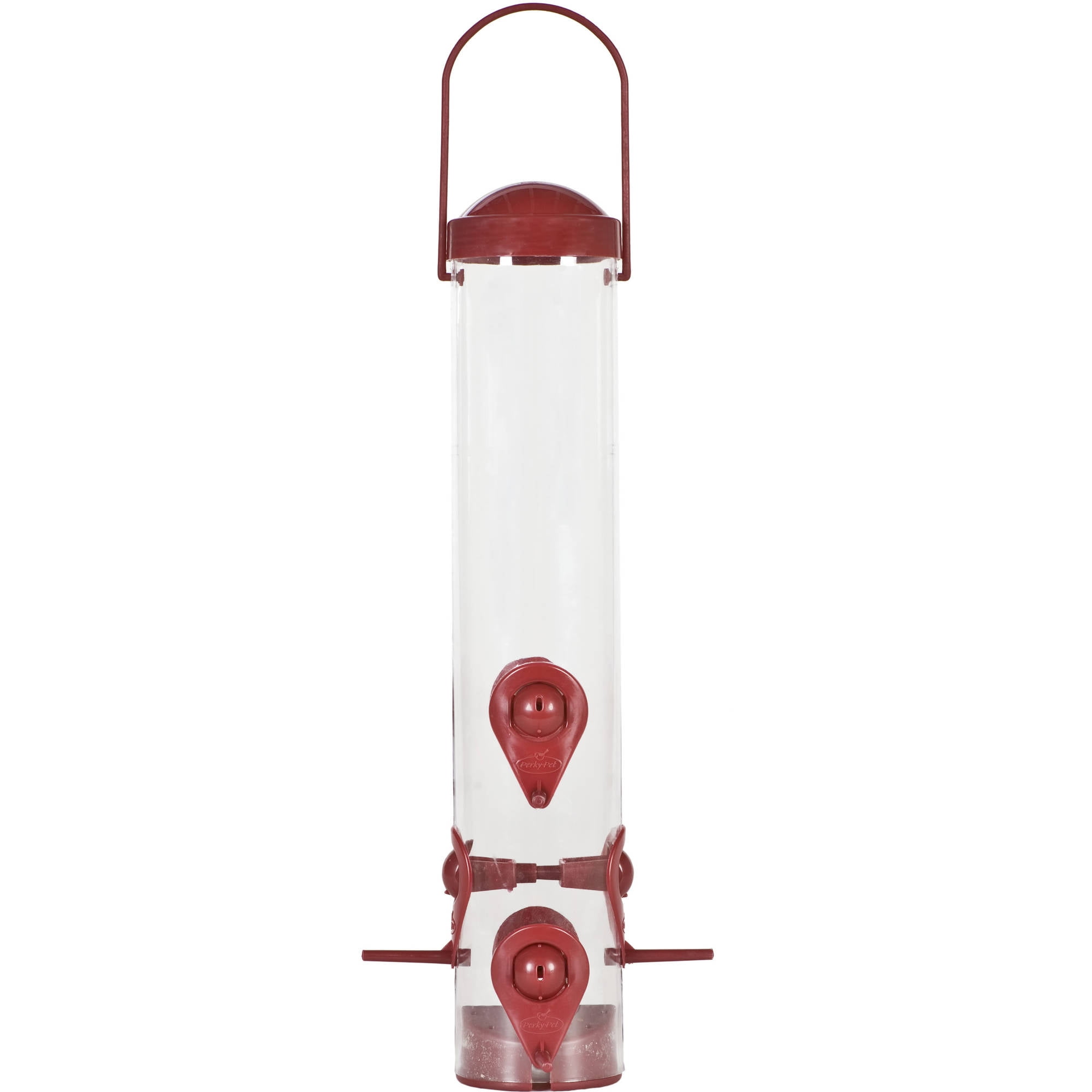

Seeds from plants, weeds, and grasses are what makeup almost all of the goldfinch’s diet, including seeds such as sunflowers, thistle, aster, to name a few, as well as some buds from a variety of trees. Goldfinches are quite different from house sparrows in both their feeding behavior and their diet, two things we can use to help separate the two bird species in the backyard with a little effort. It’s just a few at the feeder making a huge mess that gives them a bad name from causing so much waste. Some house sparrows do indeed go to the large bulk feeders but the vast majority of them spend their time underneath the feeders picking up spilled seeds and grains. But by their own nature, house sparrows are most comfortable feeding from the ground while looking for already fallen seeds. That’s not to say they won’t come to a bird feeder, because we all know they indeed do. They can also be a bit picky at times, too, while perched on a bird feeder, tossing their beaks side to side and effectively throwing a lot of good seed to the ground while searching for something in particular.īeing a grain and grass seed eater, house sparrows are, for the most part, a ground feeding type of bird.

(House sparrows are quite at home in most backyards, even without a bird feeder.)
FINCH FEEDERS CRACKED
While at backyard bird feeding stations, house sparrows will feast upon a variety of seeds, including milo, millet, cracked corn, and black oil and hulled sunflower seeds, ingredients commonly found in many inexpensive wild bird food formulas. During the summer, insects make up a good portion of their feeding efforts for food for their young. Grains and seeds, such as corn, oats, wheat, and sorghum as well as ragweed, crabgrass, and buckwheat, are commonly consumed foods of the house sparrow. House sparrows are omnivorous, meaning they eat both plant and animal matter. In order to combat the pesky house sparrow at the bird feeder, it helps to understand a little bit about house sparrows, especially their feeding behavior and preferred foods. We are currently doing it in two separate yards so let me show you what is currently working for us. Yes, you can have both goldfinches and sparrows in your yard without much, if any, direct competition between the two species, if done correctly. Keeping house sparrows away from goldfinch feeders might seem like a daunting task, but it is possible to discourage sparrows from using finch feeding stations by using specific foods, such as nyjer seed and small grass seeds such as millet, with bird feeders specifically designed for goldfinches and these certain types of seeds. They waste a lot of bird food and they can easily push out many other types of birds, particularly ones you are actually trying to get to come to your bird feeders. House sparrows are oftentimes attracted to backyard bird feeders and can be, well, let’s just be honest here, a bit of a nuisance at times.ĭon’t get me wrong by this, however, I love all birds, but house sparrows can be quite overwhelming at a backyard bird feeder if you let them be as such.

But feeding goldfinches can have a drawback, however. They are quite easy to attract, and they can be very animated, as well as entertaining, while at a simple bird feeder. I get them in my yard year-round, and I put out both birdseed and water throughout the seasons to help entice these brightly colored and uplifting birds to the premises. Goldfinches are some of my most favorite backyard bird feeding visitors. (What is it about backyard birdwatching that is so soothing to the mind, body, and soul?)


 0 kommentar(er)
0 kommentar(er)
